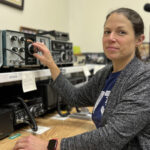Most people think of first responders as members of three well known services: the police department, the fire department, and an EMS (emergency medical services) agency – and these groups are, in fact, the mainstay of the emergency-response world without which the average American citizen would not enjoy the relatively safe way of life common today in the United States.
But there still are a very large number of unexpected and dangerous events and incidents that require more, sometimes much more, than the routine emergency response. A motor vehicle accident, for example, in which the driver cannot get out of his or her car – and outside help cannot get in, because the car is so seriously damaged that the doors have been crushed shut and cannot be opened. Or an assembly-line employee has fallen into or under a machine at work and is helplessly entangled. Or a building trench collapses and traps a construction worker under tons of dirt.
These and other frightening scenarios – which of course can and do occur in any community, large or small, in almost any country in the world – share three common features: (a) The victim/patient needs immediate medical care, and his or her chances of survival diminish in direct proportion to the time it takes to provide that care; (b) the workplace hazard that caused the alarm in the first place continues to exist – and now threatens both the patient and the rescuer; and (c) resolving the situation frequently requires the use of techniques, and the availability of equipment, not part of the standard training, or gear, for the line police, EMS technicians, or firefighters.
Each jurisdiction has specific needs; large cities may and probably will have certain additional needs, though, if only because they usually rely on commuter rail or subway systems to meet most of their transportation needs. On the other hand, rural agricultural communities usually are home to heavy farming equipment that poses specialized challenges and hazards. In short, no community is totally safe from sudden danger – in large doses.
An Unusual Blend: Airbags and Hydraulic Equipment The Emergency Medical Services (EMS) system in Pittsburgh, Pennsylvania – one of the more forward-looking of those communities – has taken a leading position in the field of what might be called “heavy-rescue” work. Every paramedic in the system, for example, is required to have passed a “Basic Vehicle Rescue” course, which teaches the use of hydraulic equipment – specifically including both cutting and spreading equipment.
There are, in fact, two specifically designated heavy-rescue units in Pittsburgh – which are operated by the city’s EMS agencies. Each unit is staffed by two paramedics with advanced training in rescue work. The two units are equipped with both the standard EMS set of medical equipment and with highly specialized heavy-rescue equipment – including, for example: (a) the hydraulic equipment needed for cutting cars open from the outside; and (b) specially designed airbags that can be used to lift very heavy and/or awkward loads (again, cars are probably the best example) off the bodies of trapped victims.
This carefully orchestrated blend of rescue and medical equipment allows the Pittsburgh units not only to safely get to the patient – and start to treat him or her in situ – but also to start the often tricky task of removing the patient a safe distance away from the incident scene.
The relatively common example of an overturned car vividly illustrates the various special skills possessed by these teams. On arrival the team first stabilizes the vehicle by shoring it up with a combination of wood boards and wedges (called cribbing), airbags, and/or jacks to make sure that the vehicle has been safely immobilized and is no longer a hazard to either the patient/victim or the responder team.
After the vehicle is stabilized, the paramedics at the scene can focus their full attention on reaching the patient and starting medical care – usually right in the car; as paramedics they are the best trained responders to provide such care. Finally, any other obstructions, at or close to the accident scene, to safely shifting the patient to the ambulance and the hospital beyond can be removed.
The use of paramedics trained in the techniques of rescue and integrated into the heavy-rescue team allows both the heavy-rescue and the emergency medical requirements to receive equal consideration in the decision-making process, and keeps both camps focused on the ultimate goal: a safe and successful rescue of the victim.

Joseph Cahill
Joseph Cahill is the director of medicolegal investigations for the Massachusetts Office of the Chief Medical Examiner. He previously served as exercise and training coordinator for the Massachusetts Department of Public Health and as emergency planner in the Westchester County (N.Y.) Office of Emergency Management. He also served for five years as citywide advanced life support (ALS) coordinator for the FDNY – Bureau of EMS. Before that, he was the department’s Division 6 ALS coordinator, covering the South Bronx and Harlem. He also served on the faculty of the Westchester County Community College’s paramedic program and has been a frequent guest lecturer for the U.S. Secret Service, the FDNY EMS Academy, and Montefiore Hospital.
-
Joseph Cahillhttps://www.domesticpreparedness.com/author/joseph-cahill
-
Joseph Cahillhttps://www.domesticpreparedness.com/author/joseph-cahill
-
Joseph Cahillhttps://www.domesticpreparedness.com/author/joseph-cahill
-
Joseph Cahillhttps://www.domesticpreparedness.com/author/joseph-cahill






